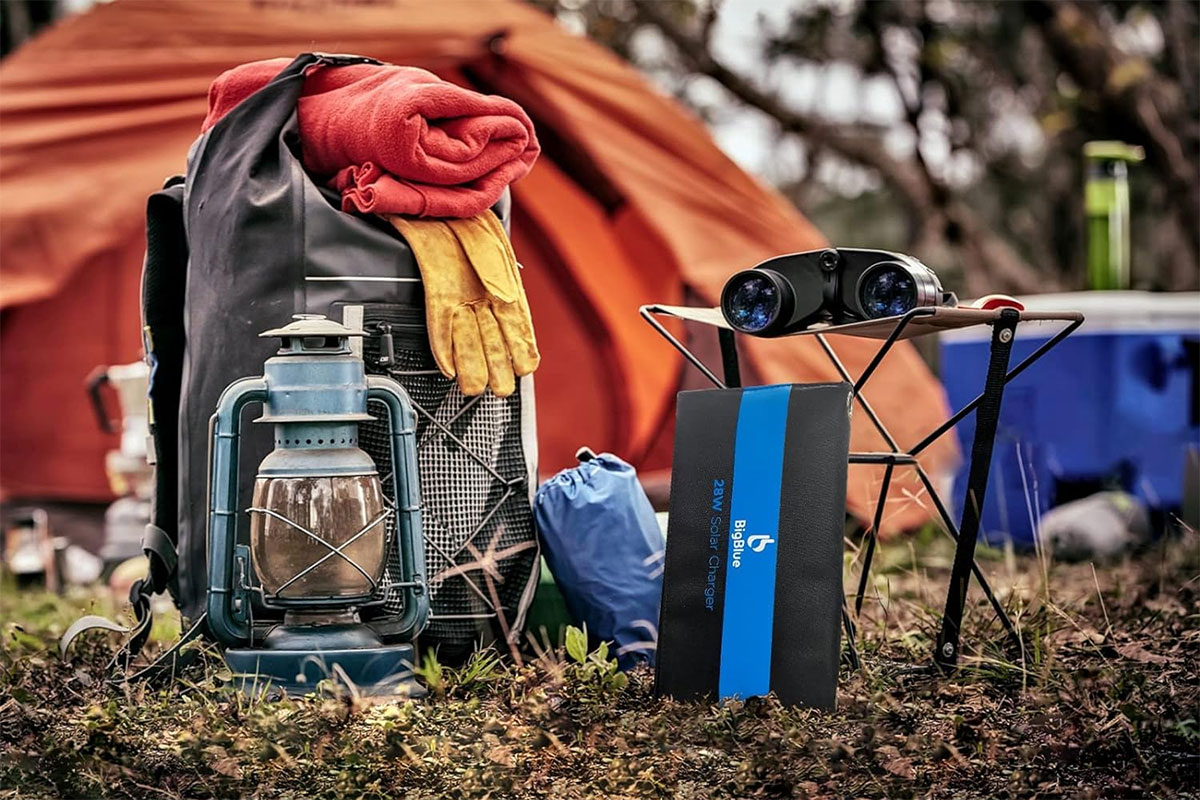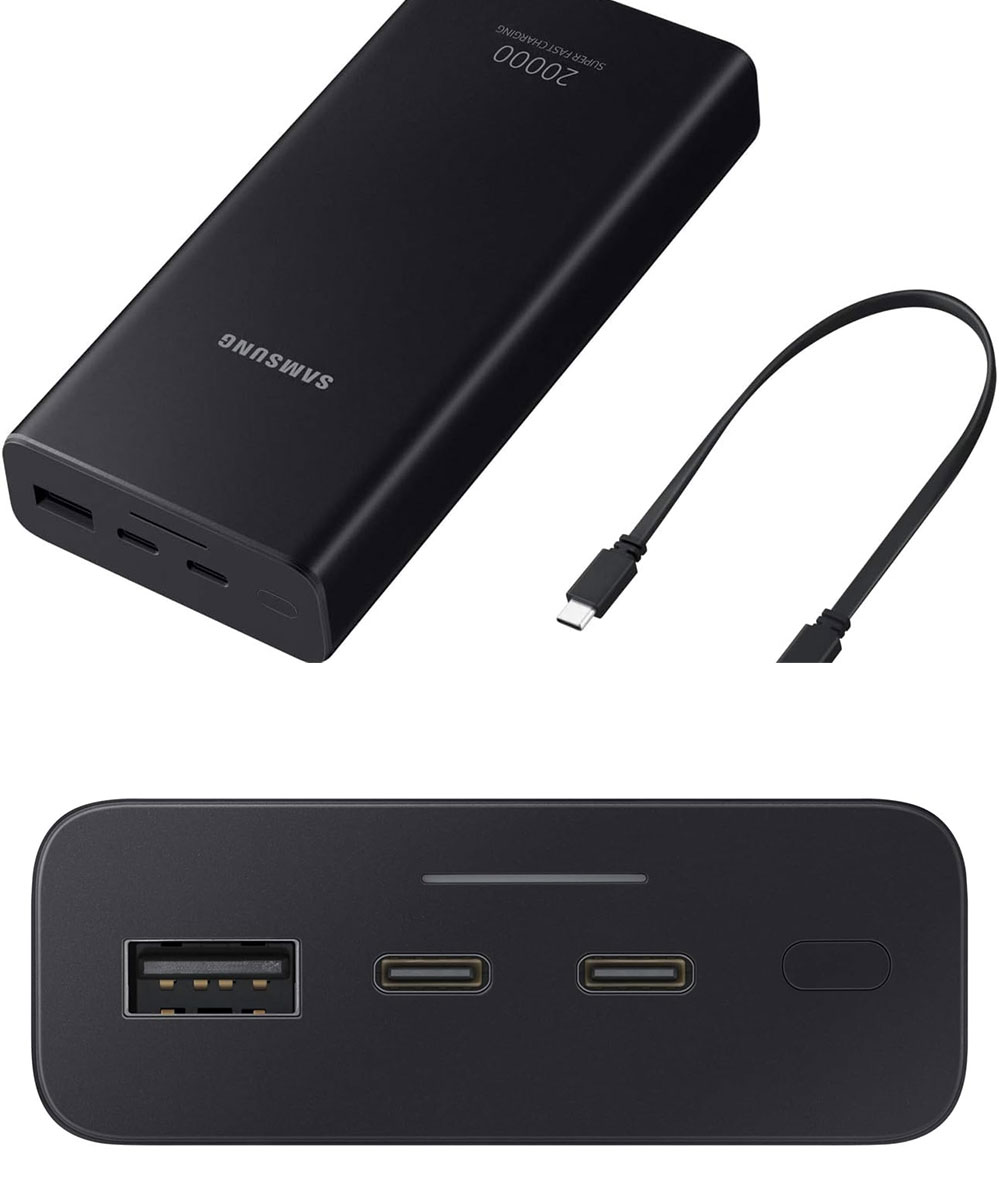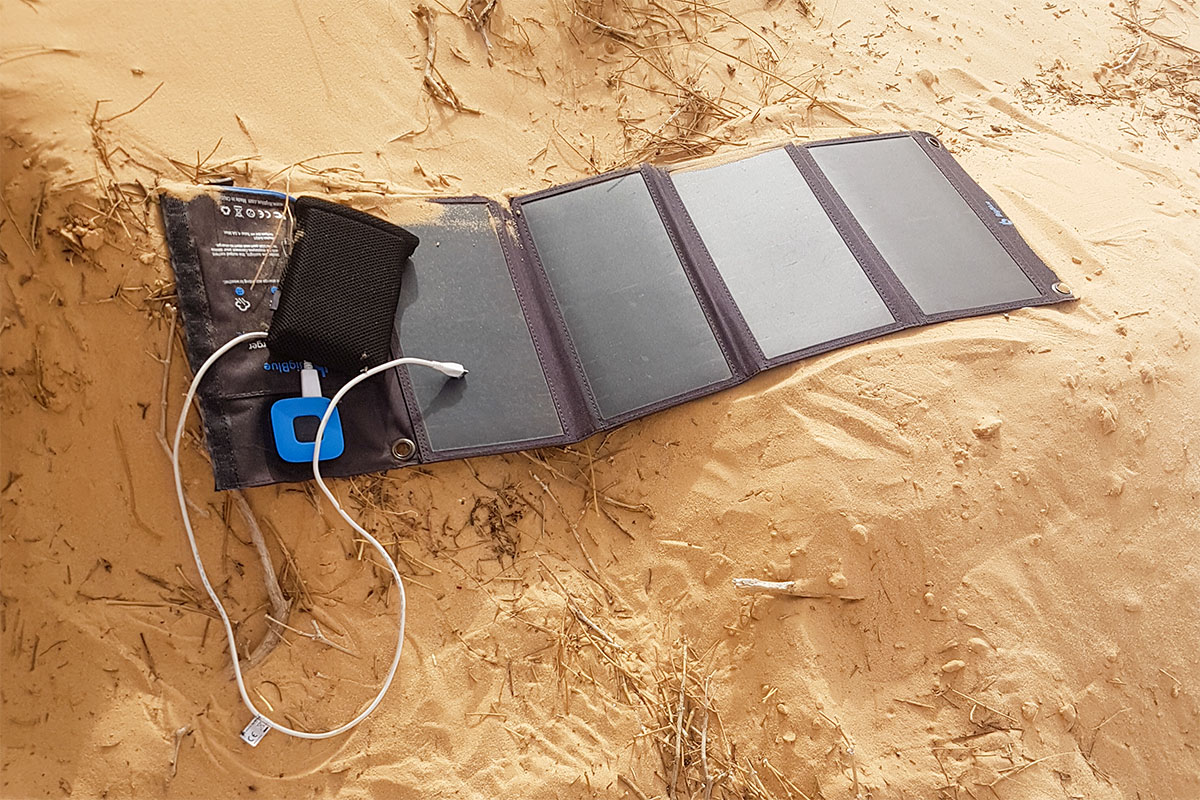Powerbank or portable solar panel for backpacking ?
It is not always easy to charge a smartphone or camera during a hike. Obviously, the problem does not arise if you stay in hostels or shelters. But as soon as you plan to spend nights in bivouac, you will need to have the right equipment: a charger or a hiking solar panel!
Recharging your equipment during a hike is not just a question of leisure. If you hike in isolated areas, then your safety is at stake.
Smartphone, camera, GoPro or GPS, let’s see how to recharge your electrical devices during a hike.
Solar battery or portable solar panel?
The question arises: should i buy a hiking solar charger (battery with integrated solar panel) or a portable solar panel and an external battery (powerbank) separately?
Concerning hiking solar chargers, the surface area of the panels attached to the battery is very small, not to say ridiculous. Fully recharging a battery takes a long time, and is almost impossible in winter. These devices are considered “gadgets” and not real hiking equipment.
A portable solar panel has a much larger surface area and power. These chargers for hikers can reach a power of 40W for small volumes when folded. Combining one or two power banks will be much more effective for your energy autonomy during a trek.
In conclusion, there is no comparison between a portable solar charger and a hiking solar panel. The latter is the only truly viable equipment for recharging your smartphone during your treks.
A trek in summer and/or in a warm region
When you travel in the summer, the best way to get electricity to charge a camera or smartphone is from the sun!
No need to bother with several external batteries (Powerbank), simply connect your smartphone directly to a portable solar panel and that’s it! In the middle of summer, charging is almost as fast as with a 220V socket.
Depending on the number of USB sockets available on your hiking solar panel, you can plug in multiple devices simultaneously (e.g. your smartphone, a GoPro and an external battery). The powerbank will be used at night or in an emergency.
Which hiking solar panel to buy?
The market for portable solar panels is growing, but not all models are equal. Having tested several models, I can recommend the BigBlue 28W, a model that now has a consensus among experienced hikers.

The BigBlue has two USB ports of 2.4W each. You will therefore be able to charge two devices simultaneously with a charging speed similar to that of 220V.
Once folded, the panel measures 28.2cm x 16cm and is 0.5cm thick. It will easily fit into any hiking backpack. You can even clip it onto the bag to continue charging while you walk.
Hiking in winter and/or in cold regions
In winter or autumn, the sun is lower. Cloud cover sometimes makes solar charging impossible. I therefore advise you to equip yourself with more external batteries. Generally, two 20AH batteries are more than enough to recharge a smartphone during a 10 to 15 day hike.
You can always take your solar panel with you to recharge the power banks when the sun comes out, but you can’t rely on it entirely.
I tested a few external batteries, and the one that gave me the most satisfaction was the Samsung 20AH (charging speed up to 25A). I tested it on hikes lasting more than 10 days in cold climates (-10° to 3°) and it held up perfectly.

Conclusion
We quickly get lost in the vast world of solar chargers, but many products on the market do not correspond to the real need for autonomy that you will have during a hike or a trek. If you want to make sure you always have battery power available on your smartphone, and recharge a few camera or GoPro batteries, then the portable solar panel and a power bank or two will be your ideal setup.
For less than 200 euros, you can equip yourself for a self-sufficient 15-day trek in winter. In summer, you will be completely independent, no matter the duration.


